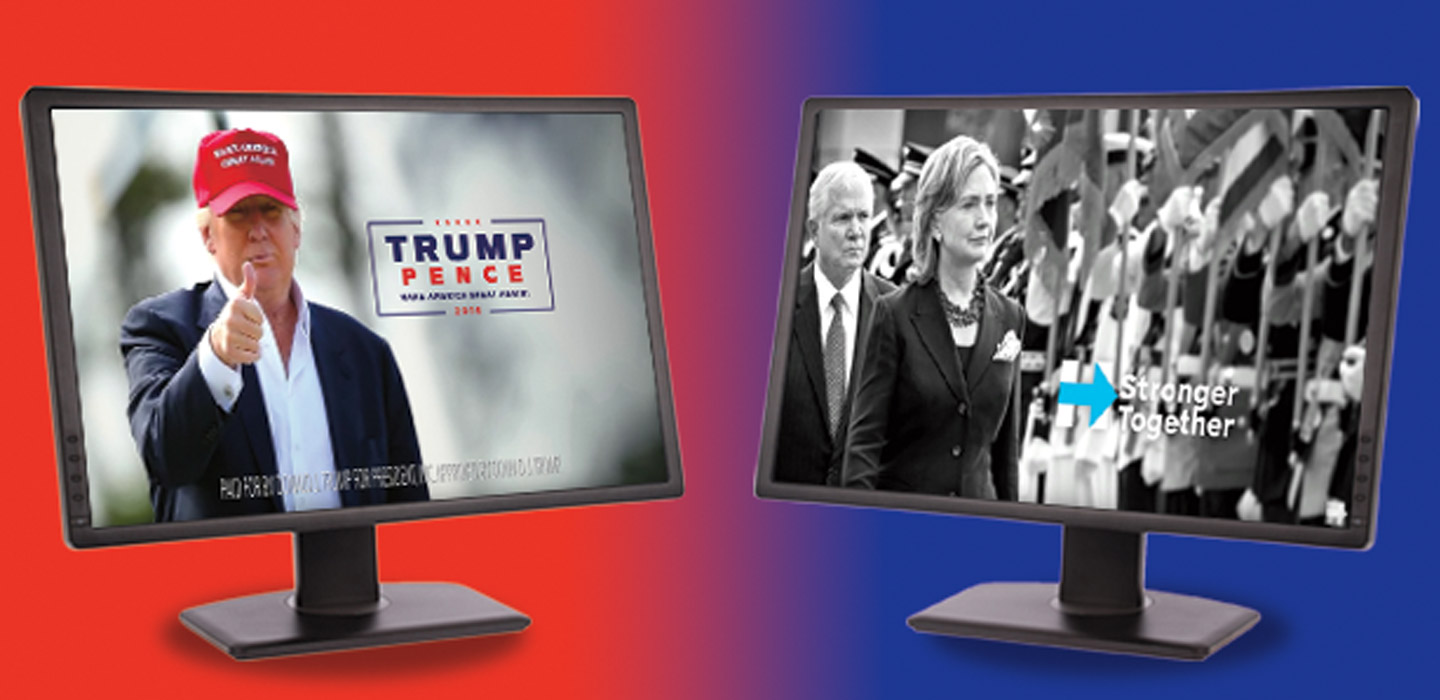In one ad, a string of grim images of shuttered factories and struggling Americans are the backdrop for the ominous narration: “In Hillary Clinton’s America, the middle class gets crushed.” In the other ad, a series of dignified images of Clinton meeting with foreign leaders is followed by the narrator’s reassuring message: “A steady leader in an unsteady world.”
With ads like these, Clinton, the Democratic candidate, and Republican candidate Donald Trump are trying to present themselves to voters in the best possible light, while conveying unflattering—even frightening—images of their opponent. Like all advertising, political ads offer a biased point of view. Just as an iPhone ad is designed to sell iPhones, a political ad is designed to sell a specific candidate.
Americans are seeing a lot of political ads this fall—especially in battleground states like Ohio, Pennsylvania, and Florida. But voters everywhere are watching them—and debating them—on social media. That’s because advertising plays such a key role in our elections.
“Old-fashioned TV advertising is tremendously important if for no other reason than most Americans don’t pay very much attention to politics,” says Erika Franklin Fowler of the Wesleyan Media Project in Connecticut, which tracks political advertising. “Campaigns are looking for ways to reach less-attentive citizens. One of the best ways you can do that is to reach citizens who are at home watching other programs.”
Political advertising has been around since the mid-19th century. But in its early days, it consisted mostly of buttons, banners, and posters intended to generate turnout at local rallies and polling places on Election Day.
In one ad, a string of grim images of shuttered factories and struggling Americans are the backdrop for the gloomy narration: “In Hillary Clinton’s America, the middle class gets crushed.” The other ad shows a series of more dignified images of Clinton. She is in meetings with foreign leaders, and the narrator gives a reassuring message: “A steady leader in an unsteady world.”
With ads like these, Democratic candidate Clinton and Republican candidate Donald Trump are trying to present themselves to voters in the best possible light. At the same time, they’re trying to convey unflattering, even frightening, images of their opponent.
Political ads offer a biased point of view like all advertising. Just as an iPhone ad is designed to sell iPhones, a political ad is designed to sell a specific candidate.
Americans in battleground states like Ohio, Pennsylvania, and Florida are seeing a lot of political ads this fall. And voters everywhere are watching and debating them on social media. That is because advertising plays such a key role in our elections.
“Old-fashioned TV advertising is tremendously important if for no other reason than most Americans don’t pay very much attention to politics,” says Erika Franklin Fowler of the Wesleyan Media Project in Connecticut, which tracks political advertising. “Campaigns are looking for ways to reach less-attentive citizens. One of the best ways you can do that is to reach citizens who are at home watching other programs.”
Political advertising has been around since the mid-19th century. In its early days, it consisted mostly of buttons, banners, and posters. They were intended to generate turnout at local rallies and polling places on Election Day.

